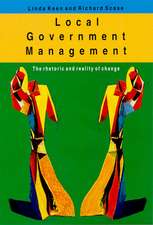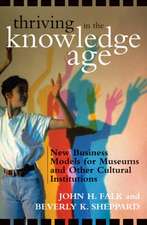Touch in Museums: Policy and Practice in Object Handling
Editat de Helen Chatterjeeen Limba Engleză Hardback – oct 2008
Preț: 1001.51 lei
Preț vechi: 1221.36 lei
-18% Nou
Puncte Express: 1502
Preț estimativ în valută:
191.63€ • 200.08$ • 158.61£
191.63€ • 200.08$ • 158.61£
Carte tipărită la comandă
Livrare economică 04-18 aprilie
Preluare comenzi: 021 569.72.76
Specificații
ISBN-13: 9781847882394
ISBN-10: 1847882390
Pagini: 312
Ilustrații: 60 b&w illustrations, bibliography, index
Dimensiuni: 156 x 234 x 22 mm
Greutate: 0.49 kg
Ediția:1
Editura: Taylor & Francis
Colecția Routledge
Locul publicării:Oxford, United Kingdom
ISBN-10: 1847882390
Pagini: 312
Ilustrații: 60 b&w illustrations, bibliography, index
Dimensiuni: 156 x 234 x 22 mm
Greutate: 0.49 kg
Ediția:1
Editura: Taylor & Francis
Colecția Routledge
Locul publicării:Oxford, United Kingdom
Cuprins
List of IllustrationsList of ContributorsIntroductionHelen ChatterjeePART I What Do We Mean By Touch?1 Museums, modernity and the class politics of touching objects Fiona Candlin2 Making sense of touchCharles Spence and Alberto Gallace3 Emotional touch: A neuroscientific overviewHugo Critchley4 Explorations in exploratory touch: The role of feeling in touching objectsFrancis McGlonePART II New Technologies for Enhancing Object Interpretation5 The use of haptic interfaces in haptics researchChristos Giachritsis6 Tactual explorations: A tactile interpretation of a museum exhibit through tactile artworks and augmented realityIsil Onol7 CONTACT: Digital modelling of object and process in artefact teaching Roger Doonan and Michael Boyd8 Out of touch? Digital technologies, ethnographic objects and sensory ordersGraeme Were9 A versatile large-scale multimodal VR system for cultural heritage visualisationCeline Loscos10 Touch technologies and museum accessRobert Zimmer, Janis Jefferies and Mandayam SrinivasanPART III Touch and Memory11 A memory for touch: The cognitive psychology of tactile memoryAlberto Gallace and Charles Spence12 Aesthetics of touch among the elderlyMichael Rowlands13 Reminiscence: Recent work at The British MuseumLaura Phillips14 Getting a handle on the past: The use of objects in reminiscence workBernie ArighoPART IV Therapeutic Approaches to Touch15 Enrichment programmes in hospitals: Using museum loan boxes in University College London HospitalGuy Noble and Helen Chatterjee16 See, touch and enjoy: Newham University Hospital's nostalgia room, Jackie O'Sullivan17 Measuring the 'difficult to measure'Caroline SelaiPART V Knowledge Transfer in Object Handling 18 How accessible are museums today?Marcus Weisen.19 The British Museum in Pentonville Prison: Dismantling barriers through touch and handlingJane Samuels, The British Museum.20 The amenable object: working with diaspora communities through a psychoanalysis of touchBernadette Lynch.The FutureTouch and the value of object handling: Final conclusions for a new sensory museologyDevorah Romanek and Bernadette Lynch.Index
Notă biografică
Helen J. Chatterjee is Deputy Director of Museums & Collections and a Lecturer in Biology at University College London.
Recenzii
"The volume as a whole is an important examination on the use of object handling in museums. - Museum IrelandA book filled with theories and philosophies, visions of what museums can be, and academically derived understandings of touch and its value in a variety of contexts... a book that inspires. - Visitor Studies - Christine Reich"
Descriere
The value of touch and object handling in museums is little understood, despite the overwhelming weight of anecdotal evidence which confirms the benefits of physical interaction with objects.
















